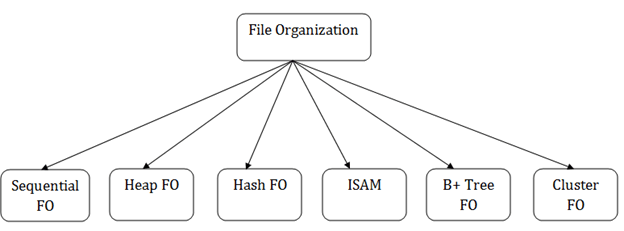File Organization
- The File is a collection of records. Using the primary key, we can access the records. The type and frequency of access can be determined by the type of file organization which was used for a given set of records.
- File organization is a logical relationship among various records. This method defines how file records are mapped onto disk blocks.
- File organization is used to describe the way in which the records are stored in terms of blocks, and the blocks are placed on the storage medium.
- The first approach to map the database to the file is to use the several files and store only one fixed length record in any given file. An alternative approach is to structure our files so that we can contain multiple lengths for records.
- Files of fixed length records are easier to implement than the files of variable length records.
Objective of file organization
- It contains an optimal selection of records, i.e., records can be selected as fast as possible.
- To perform insert, delete or update transaction on the records should be quick and easy.
- The duplicate records cannot be induced as a result of insert, update or delete.
- For the minimal cost of storage, records should be stored efficiently.
Types of file organization:
File organization contains various methods. These particular methods have pros and cons on the basis of access or selection. In the file organization, the programmer decides the best-suited file organization method according to his requirement.
Types of file organization are as follows:

- Sequential file organization
- Heap file organization
- Hash file organization
- B+ file organization
- Indexed sequential access method (ISAM)
- Cluster file organization